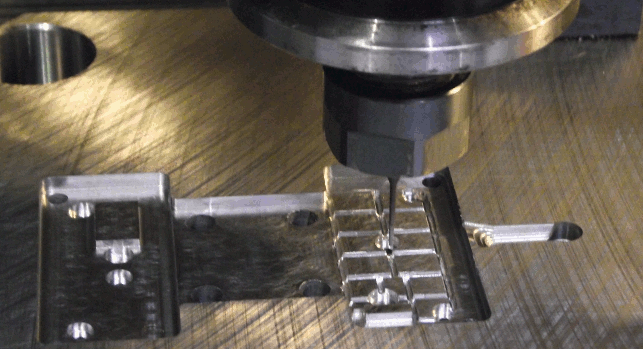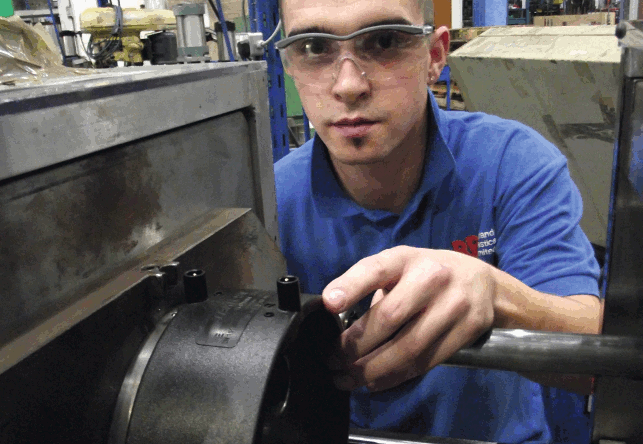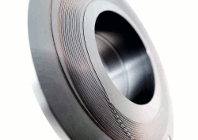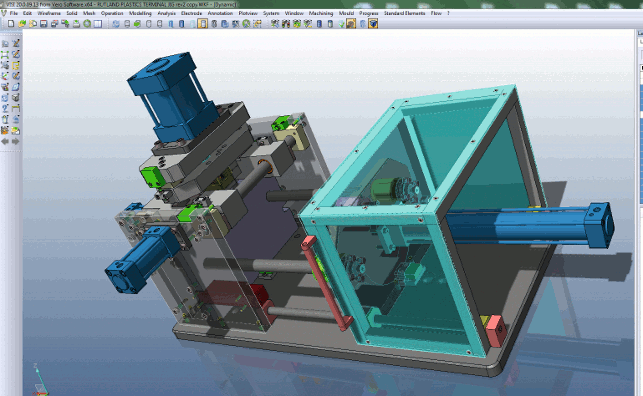Plastic injection moulders, Rutland Plastics, uses its in-house Objet 3D printer for designing and manufacturing a range of items from small jigs through to complete multi-impression mould tools.

3D milling of tool insert using the Bridgeport Mouldmaster VMC
For instance, the company recently produced a pipe coupling for the drainage industry by firstly creating a 3D printed prototype of the coupling, the mould tool for production, and then a unique jig to automate a manual part of the operation.
During this process VISI, a CAD CAM software solution from Vero Software, was used. According to Rutland’s technical manager Carl Martin, the mesh functionality within VISI was a useful tool when preparing the model geometry for printing on the Objet Connex 350.
This mesh feature set provides tools to clean-up problematic vertices, simplify, fill holes and analyse the mesh topology. Printing a fit-for-purpose prototype meant the customer could fit a prototype physical model to the pipes, ensuring it functioned as expected, before having the mould tool built. “It’s expensive to change tooling if the moulded part isn’t correct.
The 3D printed part worked perfectly, so we then moved forward with building the injection mould tool in VISI,” says Martin.
As the part had already been designed in VISI, it was a seamless CAD through CAM process to manufacture the mould in P20 hardened tool steel. VISI Mould’s essential model preparation tools inspect the model data for moulding feasibility, while draft analysis interrogates the model to easily identify any potential design issues.
“We used the split line and plane creation function for the two cavities, and then built up the ancillaries around that to design the tool as a whole. It meant we could be sure of the accuracy of each individual aspect – namely the cavity plates, the backing plate, the ejector system, the risers and the clamping plates,” adds Martin.
Go with the flow
Another important aspect was how VISI Flow’s injection simulation showed optimum moulding conditions and locating the ideal gate positions.
“It was vital for us to verify where the part needed to be gated, which areas may be difficult to fill, and where venting needed to be placed into the tool. VISI Flow showed us how the tool would perform on the moulding machine,” he comments.
The High Density Polyethylene (HDPE) component links two pieces of pipe by electrofusion, using special fittings that have built-in electric heating elements which are used to weld the joint together.
In order to be successfully welded in the field, brass continuity pins have to be inserted before the part is shipped out of the factory. Originally, one operator managed the turning and wire laying, whilst a second person manually inserted the pins that hold the wire in place. Automating this pinning process was essential for Rutland Plastics to remain competitive.
“We used VISI to design the jig to handle this job, from the ground up. VISI created the components and animated all movements showing how it would function on the shop floor,” says Martin.
Tools for the job
Rutland also uses VISI PEPS-Wire, VISI Electrode and VISI Machining 3D, which also play an important role in the production process, programming two Bridgeport VMC mills, a Fanuc Robocut 1ia wire eroder and an AgieCharmilles Roboform 30 spark eroder.
“With around 0 per cent of moulded products requiring textured finishes, we often use spark erosion. If a customer requires a certain VDI spark finish we design an electrode in VISI, bring our back-end Erowa block into the system and get it to the point at which it needs to be placed on the machine. It’s then manufactured on either the lathes or mills, and the form sparked in to give us the specified finish,” comments Martin.

Automating the pinning process and reducing manpower was essential for Rutland Plastics to remain competitive
With electrode production being time consuming and complex, this VISI module easily creates and manages electrodes and their holders for detailed and hard-tomachine features.
VISI PEPS-Wire is used where small, intricate inserts need to be wired into the mould tool. It provides automatic recognition of wire features from solid geometry, creating reliable wire EDM toolpaths and proven NC code.
Once the tools are built, Rutland Plastics use its range of Engel and Krauss Maffei injection moulding machines to produce a variety of components for the gas, water and petrochemical industries, agricultural products, electrical enclosures, the construction industry and automotive.
How VISI software is helping injection moulding specialist Rutland Plastics
Default







